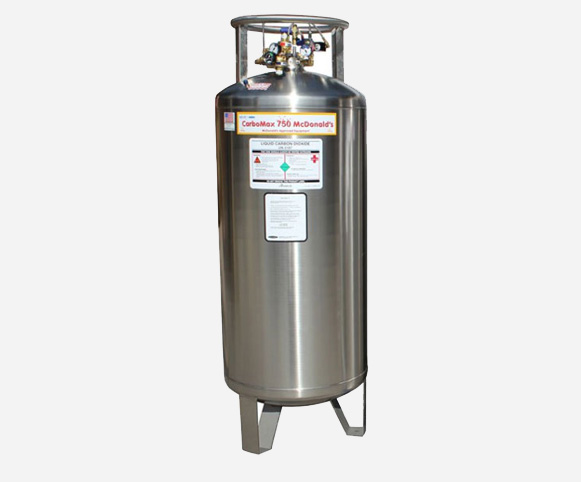Bars | Restaurants | Brewpubs | Distilleries
New operational concepts for the food and beverage industry have opened the door to expanded Hazardous Material dangers for employees, customers, and first-responders. Did you know the larger CO2 gas cylinders require increased CO2 gas cylinder safety measures? It’s imperative to implement gas monitoring in restaurants to protect your staff and guests against the dangers of CO2 leaks.

Gas detection in restaurants is more prevalent today since they began increasing the size of their CO2 gas cylinders in order to improve efficiency and reduce costs in their soda-dispensing operations. Smaller gas cylinders required frequent replacement interrupting operations; thereby inconveniencing customers. The decision to install high-capacity containers of liquid Carbon Dioxide (called dewars) has added a significant new risk factor which requires new gas detection compliance requirements. These large CO2 gas cylinders contain enough Carbon Dioxide to completely displace the oxygen in a closed area. The result is the potential for immediate loss of consciousness and death in the event of even a small leak. (see chart below). Even adjacent spaces – including public restrooms are at risk. These larger CO2 gas cylinders require additional carbon dioxide gas safety measures that include fume detection sensors as well as better ventilation.
Rochester Hills, Michigan has one of the few, fully-accredited Building Departments in the United States. See their CO2beverage dispensing requirements here:
Distilleries
Distillery operations typically begin with the milling of various grains – a process that has the potential to generate combustible dust. Typical distillery building code requirements do not include consideration for this hazard. However, once the explosive dust hazard has been identified, design mitigation – including installation of explosion-proof electrical components, blow-out panels and ventilation monitoring is required.
As an alternative, some equipment used for the milling process is sealed to prevent the escape of hazardous dust. Combustible dust hazards in a distillery must be mitigated. While more expensive, with regular inspection and maintenance, establishing a Life Safety System to reduce or eliminate combustible dust hazard will keep your employees and guests safe.

The distilling operations also generate dangerous toxic and flammable materials including Ethanol and Methanol. This requires gas detection and distillery ventilation requirements. The bottling and dispensing process require Nitrogen and Carbon Dioxide – both potential cryogenic hazards. Additionally, both Nitrogen and Carbon Dioxide represent an oxygen deprivation hazard and when deployed in a closed space, represent a hazard to employees, customers and first-responders.
Finally, the warehouse operations at most distilleries have loading areas where Carbon Monoxide and Nitrogen Dioxide may be present due to truck or forklift operation. Regular exposure to these highly toxic substances represents a significant health hazard and may require a gas detection system as well as a ventilation control system as part of the facility-wide Life Safety System.
A Hazardous Material Opinion and Report should be initiated to assess the hazards and determine what the Building and Fire Codes will require
Bars & Brewpubs
Bars and Brewpubs typically utilize numerous canisters of Carbon Dioxide (C02) and Nitrogen to drive their distribution process. Even though each gas cylinder is a moderate size, the number of cylinders – and the number of hoses and connectors – represents a significant risk requiring enhanced gas cylinder safety measures. While these cylinders are typically concealed in a small, closed area accessed only by employees, the adjacent spaces – including public restrooms are at risk. One recent death at a Florida restaurant involved a patron overcome by CO2 in the ladies’ restroom.

The additional challenges associated with brewing beer including the production of large amounts of Carbon Dioxide- a normal byproduct of the fermentation process – that in large enough quantities represents a health hazard due to oxygen deprivation. The size of the vats and the methods for heating may result in a requirement for Gas Detection Monitoring and Oxygen monitoring.
In addition to CO2 container leakage, many Bars & Brewpubs (especially those serving food) also have walk-in coolers. As a closed space, these represent a significant hazard to employees in the event of a CO2 or Nitrogen leak that creates an oxygen-deficient environment.
Rochester Hills, Michigan has one of the few, fully-accredited Building Departments in the United States. See the Hazards of Walk-In Cooler requirements.
Need Maintenance on an
Existing Gas or Leak Detection System?
Schedule a Field Service Engineer who will inspect your facility and make sure it meets all compliance requirements.
